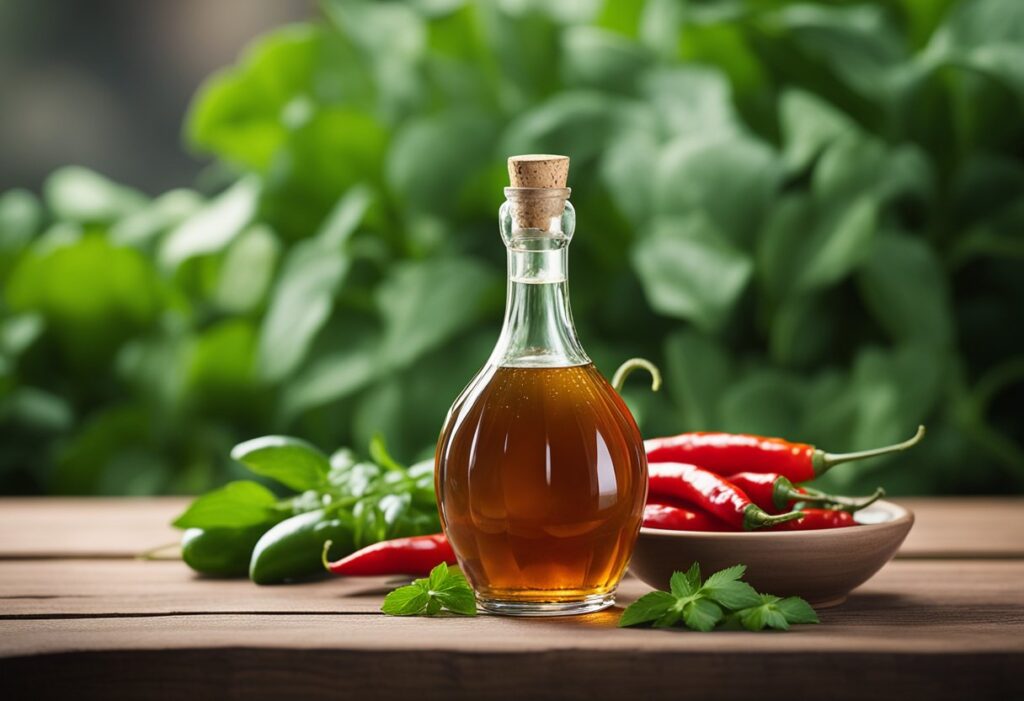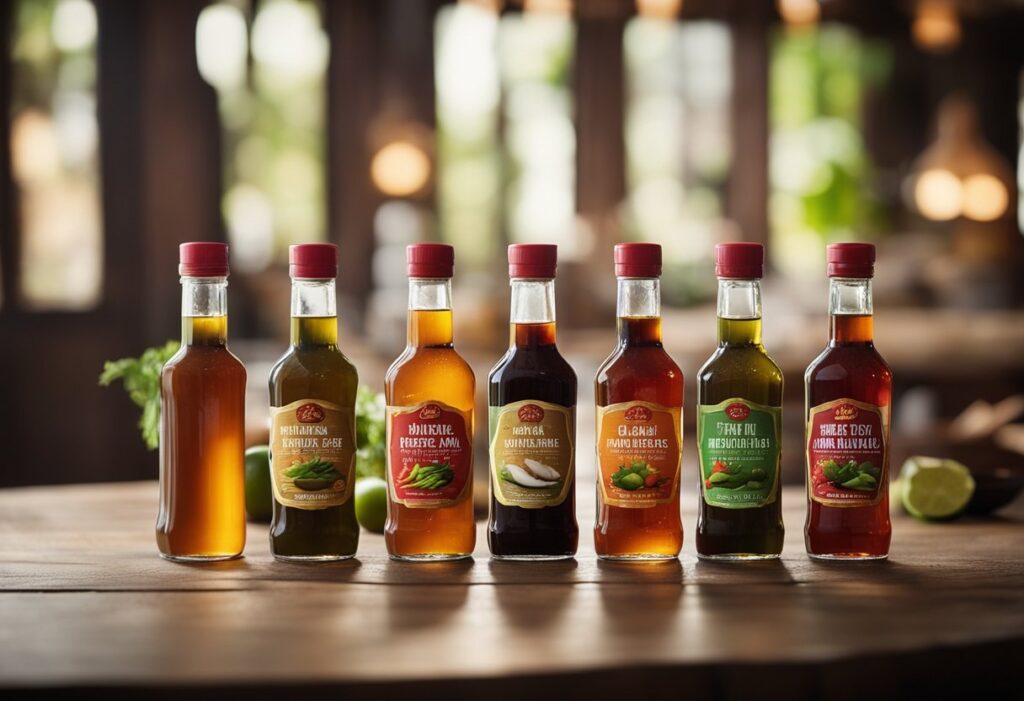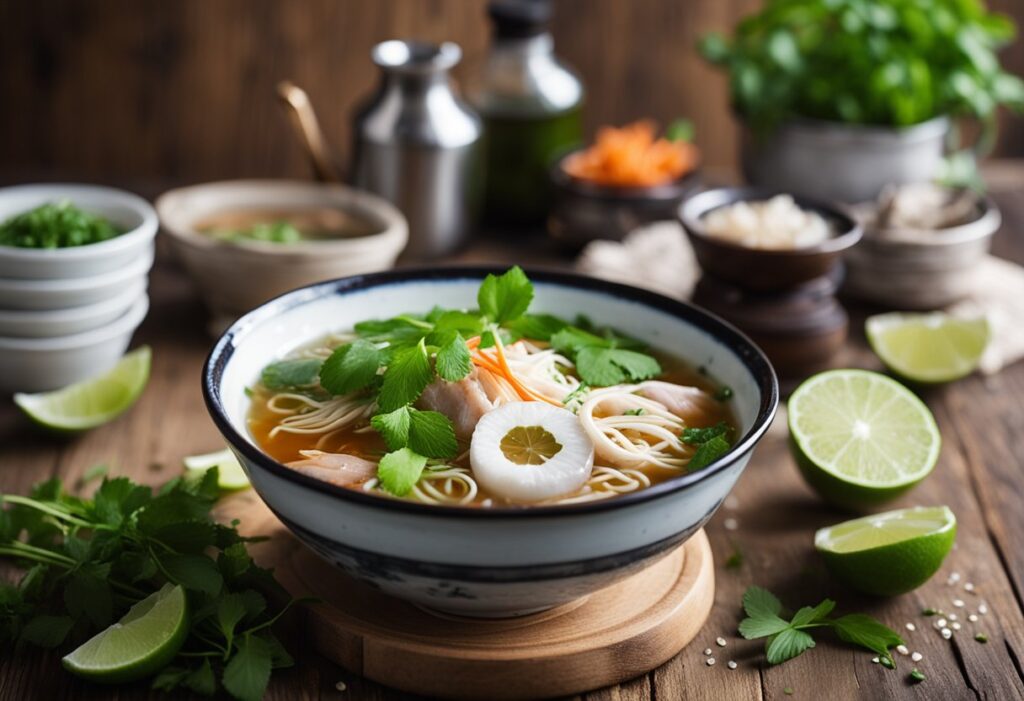Vietnamese fish sauce, also known as nước mắm, is a staple ingredient in Vietnamese cuisine. This pungent, salty condiment is made from fermented fish and has a strong umami flavor that adds depth and complexity to dishes. Although it may not be as well-known as soy sauce or Worcestershire sauce, fish sauce is a crucial component in many Vietnamese dishes, from phở to bún chả.

Fish sauce has a long history in Vietnam, dating back to at least the 17th century. It was originally used as a way to preserve fish during the off-season, but it quickly became a popular seasoning and dipping sauce. Today, fish sauce is produced throughout Vietnam and is a major export for the country. There are many different varieties of fish sauce, each with its own unique flavor profile, depending on the type of fish used and the fermentation process. However, the most common type of fish sauce is made from anchovies and has a strong, salty taste.
History of Vietnamese Fish Sauce
Origins
Fish sauce has been a staple in Vietnamese cuisine for centuries. Its origins can be traced back to the coastal regions of Vietnam, where fishermen used to ferment fish in salt to preserve it. This early form of fish sauce was known as “nuoc mam” and was used as a condiment to enhance the flavor of food.
Cultural Significance
Fish sauce has played a significant role in Vietnamese culture and cuisine. It is often referred to as the “soul” of Vietnamese cuisine and is used in a variety of dishes, including pho, banh mi, and bun cha. Vietnamese people take great pride in their fish sauce, and many families have their own secret recipes that have been passed down for generations.
Evolution Over Time
Over time, the production of fish sauce has evolved to meet the demands of a growing population. Today, fish sauce is produced on an industrial scale, with modern factories using advanced technology to produce high-quality fish sauce. Despite these changes, the basic process of making fish sauce has remained largely the same. Fish is still fermented in salt to produce a savory, umami-rich sauce that is used to add depth of flavor to a wide range of dishes.
In conclusion, the history of Vietnamese fish sauce is a testament to the ingenuity of the Vietnamese people. From its humble origins as a way to preserve fish, fish sauce has become an integral part of Vietnamese cuisine and culture.
Production Process
Ingredients
Vietnamese fish sauce is made from just two ingredients: fish and salt. The type of fish used can vary, but typically it is made from small, saltwater fish such as anchovies or sardines. The fish are cleaned and then mixed with salt in large vats.
Fermentation
After the fish and salt are mixed together, the mixture is left to ferment for several months. During this time, naturally occurring enzymes break down the fish and salt mixture, creating a liquid that is rich in umami flavor. The fermentation process is closely monitored to ensure that the fish sauce develops the desired taste and aroma.
Aging
Once the fermentation process is complete, the fish sauce is aged for several more months. This allows the flavors to develop further and gives the fish sauce a more complex taste. The aging process can take anywhere from several months to several years, depending on the desired flavor profile.
Bottling
After the aging process is complete, the fish sauce is strained to remove any solids and then bottled. The bottles are typically made from glass or plastic and are sealed to prevent air from entering. Vietnamese fish sauce is known for its distinct aroma and flavor, which can vary depending on the brand and type of fish used.
Overall, the production process for Vietnamese fish sauce is a time-consuming and labor-intensive process. However, the end result is a delicious and versatile condiment that is used in a wide variety of Vietnamese dishes.
Types of Vietnamese Fish Sauce

Regional Varieties
Vietnamese fish sauce varies by region, with each area having its own unique flavor profile. The most well-known varieties include Phu Quoc, Phan Thiet, and Nha Trang fish sauce. Phu Quoc fish sauce is known for its clear color and strong umami flavor, while Phan Thiet fish sauce tends to be saltier and darker in color. Nha Trang fish sauce is often considered the most balanced in terms of saltiness and sweetness.
Flavor Profiles
Vietnamese fish sauce is made from various types of fish, such as anchovy, mackerel, or sardines. The fermentation process also plays a significant role in the flavor profile. Some fish sauces are fermented for a shorter period, resulting in a milder taste, while others are fermented for a more extended period, resulting in a stronger, more pungent flavor.
Grade and Quality
Vietnamese fish sauce is graded based on its protein content, with higher protein content indicating a higher quality sauce. The protein content can range from 20% to 40%. Additionally, some fish sauce brands may add sugar or other ingredients to enhance the flavor or color of the sauce. It’s essential to check the ingredient list and choose a high-quality fish sauce with minimal additives.
In summary, Vietnamese fish sauce comes in various regional varieties, each with its own unique flavor profile. The fermentation process and the type of fish used also play a significant role in the taste. When choosing a fish sauce, it’s important to consider the protein content and any added ingredients to ensure the highest quality product.
Culinary Uses

Traditional Dishes
Fish sauce is a staple ingredient in many traditional Vietnamese dishes. It is used as a seasoning and flavor enhancer in soups, stews, marinades, and dipping sauces. One of the most popular dishes that feature fish sauce is the traditional Vietnamese noodle soup, pho. Fish sauce is added to the broth to give it a savory and umami flavor. Another dish that uses fish sauce is bun cha, which is a grilled pork dish served with rice noodles, herbs, and a dipping sauce made with fish sauce.
Cooking Techniques
Fish sauce can be used in a variety of cooking techniques, including stir-frying, grilling, and braising. When stir-frying, fish sauce can be added to the wok along with other seasonings to create a savory and flavorful dish. When grilling, fish sauce can be used as a marinade to add flavor to meats and vegetables. When braising, fish sauce can be added to the cooking liquid to give the dish a rich and savory flavor.
Pairings and Combinations
Fish sauce pairs well with a variety of ingredients, including garlic, ginger, lemongrass, and chili peppers. It can also be combined with other condiments, such as soy sauce, vinegar, and lime juice, to create a dipping sauce or marinade. Fish sauce can be used to add flavor to a variety of dishes, including salads, stir-fries, and grilled meats. It can also be used as a substitute for salt in some recipes.
Nutritional Value
Health Benefits
Vietnamese fish sauce is a nutrient-dense condiment that offers several health benefits. It is a good source of protein, vitamins, and minerals. Fish sauce is rich in omega-3 fatty acids, which are essential for brain function and heart health. It is also low in calories and carbohydrates, making it an excellent choice for people who are watching their weight or managing their blood sugar levels.
Additionally, fish sauce contains antioxidants that can help protect the body against free radicals and reduce inflammation. It also contains choline, a nutrient that is important for brain development and cognitive function. Choline is also essential for liver health and can help prevent liver damage.
Dietary Considerations
While fish sauce is a nutritious condiment, it may not be suitable for everyone. People who are allergic to fish should avoid fish sauce as it can cause an allergic reaction. Additionally, fish sauce is high in sodium, which can be harmful to people with high blood pressure or heart disease. It is important to use fish sauce in moderation and to choose a low-sodium variety whenever possible.
Fish sauce is also not suitable for vegetarians or vegans, as it is made from fish. However, there are vegan alternatives available that are made from soy sauce or mushrooms.
In conclusion, Vietnamese fish sauce is a healthy and flavorful condiment that offers several health benefits. It is a good source of protein, vitamins, and minerals, and contains omega-3 fatty acids, antioxidants, and choline. However, it is important to use fish sauce in moderation and to choose a low-sodium variety whenever possible.
Storage and Preservation
Shelf Life
Vietnamese fish sauce has a long shelf life, but it is important to store it properly to ensure its quality and safety. Unopened fish sauce can last for several years, while opened fish sauce can last for up to a year if stored correctly.
Best Practices
To maintain the quality of Vietnamese fish sauce, it is best to store it in a cool, dry place away from direct sunlight. It is also important to keep the bottle tightly sealed to prevent air from entering and spoiling the sauce.
If the fish sauce develops a cloudy appearance or an off smell, it is best to discard it. Additionally, if the sauce has been stored for an extended period, it is recommended to check the expiration date before use.
To prevent cross-contamination, it is important to use a clean utensil when scooping fish sauce from the bottle. It is also best to avoid storing fish sauce near other strongly scented foods, as it can absorb the flavors and odors of nearby items.
Overall, by following these best practices, Vietnamese fish sauce can be stored and preserved for an extended period while maintaining its quality and safety.
Global Influence
Export
Vietnamese fish sauce has gained popularity worldwide and has become a staple in many kitchens. The export of fish sauce has increased significantly in recent years, with Vietnam being the largest exporter of fish sauce in the world. The quality of Vietnamese fish sauce has been recognized internationally, and it has won several awards for its taste and quality.
Adaptations
Vietnamese fish sauce has been adapted by many other cultures and cuisines. In Thailand, fish sauce is used as a condiment and is an essential ingredient in many Thai dishes. In the Philippines, fish sauce is used as a dipping sauce for grilled meat and fish. In Japan, fish sauce is used as a seasoning for soups and stews.
Comparisons with Other Fish Sauces
Vietnamese fish sauce is often compared to other fish sauces from around the world. Thai fish sauce, for example, is saltier and has a stronger flavor than Vietnamese fish sauce. Filipino fish sauce, on the other hand, is sweeter and less salty than Vietnamese fish sauce. Japanese fish sauce, or shottsuru, is made from a different type of fish and has a milder flavor than Vietnamese fish sauce.
Overall, Vietnamese fish sauce has had a significant impact on global cuisine and has been adapted and used in many different ways. Its unique flavor and versatility have made it a popular ingredient in many dishes around the world.

